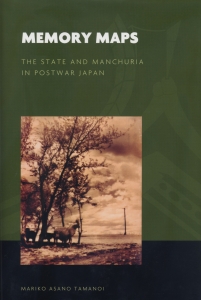Memory Maps: The State and Manchuria in Postwar Japan
Biography
Between 1932 and 1945, more than 320,000 Japanese emigrated to Manchuria in northeast China with the dream of becoming land-owning farmers. Following the Soviet invasion of Manchuria and Japan’s surrender in August 1945, their dream turned into a nightmare. Since the late 1980s, popular Japanese conceptions have overlooked the disastrous impact of colonization and resurrected the utopian justification for creating Manchukuo, as the puppet state was known. This re-remembering, Mariko Tamanoi argues, constitutes a source of friction between China and Japan today. Memory Maps tells the compelling story of both the promise of a utopia and the tragic aftermath of its failure. An anthropologist, Tamanoi approaches her investigation of Manchuria’s colonization and collapse as a complex “history of the present,” which in postcolonial studies refers to the examination of popular memory of past colonial relations of power. To mitigate this complexity, she has created four “memory maps” that draw on the recollections of former Japanese settlers, their children who were left in China and later repatriated, and Chinese who lived under Japanese rule in Manchuria. The first map presents the oral histories of farmers who emigrated from Nagano, Japan, to Manchuria between 1932 and 1945 and returned home after the war. Hikiagemono (autobiographies) make up the second map; the third examines the oral and written memories of the children of Japanese settlers who were left behind at the war’s end but returned to Japan after relations between China and Japan were normalized in 1972. The memories of Chinese who lived the age of empire in Manchuria make up the fourth map. In the final chapter, Tamanoiconsiders theoretical questions of “the state” and the relationship between place, voice, and nostalgia.
Series: The World of East Asia
University of Hawaii Press, 2008
ISBN-10: 0824832671
ISBN-13: 978-0824832674


